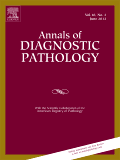
Annals of Diagnostic Pathology
Scope & Guideline
Unveiling New Horizons in Pathologic Research.
Introduction
Aims and Scopes
- Histopathological Diagnosis and Analysis:
The journal emphasizes the importance of histopathological diagnosis across various cancers and diseases, utilizing both conventional techniques and advanced methods such as immunohistochemistry and molecular profiling. - Molecular Pathology:
There is a strong focus on molecular pathology, including the assessment of genetic mutations, expression profiles, and molecular markers that aid in the diagnosis and prognosis of tumors. - Clinical Correlation of Pathological Findings:
Research articles often highlight the clinical implications of histopathological findings, providing insights into how these findings can influence treatment decisions and patient outcomes. - Emerging Diagnostic Techniques:
The journal showcases innovative diagnostic techniques, such as digital pathology and machine learning applications, aimed at improving the accuracy and efficiency of pathological assessments. - Interdisciplinary Approaches:
It encourages interdisciplinary research that combines pathology with other medical fields, fostering a holistic understanding of disease processes.
Trending and Emerging
- Digital Pathology and AI Applications:
There is an increasing trend in the use of digital pathology and artificial intelligence for diagnostic purposes, with studies exploring the effectiveness of these technologies in enhancing diagnostic accuracy. - Molecular and Genetic Markers:
Research focusing on the identification and application of molecular and genetic markers in cancer diagnosis and prognosis has gained momentum, highlighting the importance of personalized medicine. - Tumor Microenvironment and Immune Profiling:
Emerging themes include the study of the tumor microenvironment and immune profiling, with a focus on how these factors influence tumor behavior and response to therapy. - Interdisciplinary Approaches to Pathology:
There is a growing interest in interdisciplinary research that bridges pathology with other fields such as oncology, radiology, and genetics, leading to comprehensive approaches to disease management. - Patient-Centric Research:
An increasing number of studies emphasize patient outcomes and quality of life, reflecting a shift towards patient-centric research in pathology.
Declining or Waning
- Traditional Cytopathology Techniques:
There has been a noticeable decline in papers focusing solely on traditional cytopathology techniques, as newer methodologies and technologies gain prominence. - Descriptive Studies without Clinical Correlation:
Research that lacks a direct clinical correlation or application has become less frequent, as the journal prioritizes studies that provide insights into patient management based on pathological findings. - General Reviews of Pathological Techniques:
Reviews that broadly cover pathological techniques without a focused application or case studies have seen a decrease, indicating a shift towards more specialized and applied research.
Similar Journals
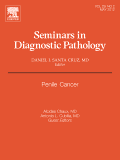
SEMINARS IN DIAGNOSTIC PATHOLOGY
Exploring the frontiers of diagnostic pathology.Seminars in Diagnostic Pathology is a premier journal that has established itself as an essential resource in the field of pathology since its inception in 1984. Published by W B Saunders Co-Elsevier Inc, this journal boasts an impressive Q1 ranking in the pathology category for 2023, placing it in the top tier of medical journals worldwide. With a focus on diagnostic pathology, it offers a platform for groundbreaking research and advancements that bridge the gap between basic science and clinical practice. The journal is committed to publishing high-quality review articles, case reports, and expert opinions that provide valuable insights for professionals, researchers, and students alike. Although it operates on a subscription model, the journal's extensive impact is reflected in its Scopus rank (#56/208), with a remarkable 73rd percentile standing in the pathology and forensic medicine category. The journal's authoritative content not only aids in enhancing knowledge but also fosters an understanding of the evolving challenges and methodologies in diagnostic pathology, making it an indispensable tool for anyone dedicated to excellence in the field.

Malaysian Journal of Pathology
Transforming understanding of disease through original research.Malaysian Journal of Pathology, published by the MALAYSIAN JOURNAL PATHOLOGY, stands as a pivotal resource in the fields of pathology and medicine, contributing rich insights since its inception in 1979. This peer-reviewed journal, based in Malaysia, is dedicated to disseminating original research, review articles, and case studies that advance the understanding of disease mechanisms and diagnostics. With a current impact factor reflecting its ranked positioning—Q4 in Cell Biology, Q4 in Histology, and Q3 in both Miscellaneous Medicine and Pathology & Forensic Medicine—this journal serves as an essential platform for researchers, clinicians, and students alike. Although it operates without open access, its scholarly rigor and contributions are well recognized, holding ranks such as #84 in Pathology and Forensic Medicine according to Scopus. The Malaysian Journal of Pathology is committed to fostering innovation and excellence in medical research, making it an invaluable tool for professionals seeking to stay abreast of significant advancements in the pathology domain.
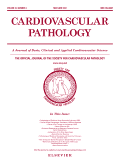
CARDIOVASCULAR PATHOLOGY
Elevating the discourse in cardiovascular medicine.CARDIOVASCULAR PATHOLOGY, published by Elsevier Science Inc, is a distinguished journal dedicated to the dissemination of high-quality research in the fields of cardiology, pathology, and cardiovascular medicine. With an ISSN of 1054-8807 and an E-ISSN of 1879-1336, this journal has established itself as a vital resource for researchers, clinicians, and students alike. It is positioned in the Q2 quartile for both cardiology and pathology, indicating its significant impact and relevance in these disciplines. The journal offers a platform for innovative studies, reviews, and clinical insights, aiming to enhance our understanding of cardiovascular conditions and their pathological underpinnings. With an H-index that showcases its scholarly influence, CARDIOVASCULAR PATHOLOGY is committed to advancing the field through rigorous peer review and open dialogue among professionals. The journal is accessible through institutional subscriptions, making it an essential reference point for ongoing research through its convergence of knowledge from 1992 through 2024.
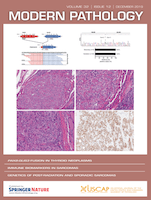
MODERN PATHOLOGY
Advancing the Frontiers of PathologyMODERN PATHOLOGY is a premier journal in the field of pathology and forensic medicine, published by Elsevier Science Inc. With an impressive impact factor that places it in the top 1st quartile (Q1) for 2023, and a remarkable rank of 5 out of 208 in its category according to Scopus, it serves as a vital resource for researchers, professionals, and students alike. Established in 1988, the journal focuses on the latest advancements in diagnostic pathology, molecular pathology, and related fields, providing a platform for innovative research that drives the discipline forward. Although it does not operate under an open access model, readers can expect rigorously peer-reviewed publications that contribute to the growing body of knowledge in pathology. With a continuous commitment to excellence and relevance, MODERN PATHOLOGY remains a fundamental avenue for disseminating high-quality scientific research globally, facilitating the growth and development of its field.

Diagnostic Pathology
Unlocking the Secrets of Disease Through Collaborative ScienceDiagnostic Pathology is a prominent open-access journal published by BMC, dedicated to advancing the field of pathology by providing a platform for high-quality research findings since its inception in 2006. Based in the United Kingdom, the journal covers a broad spectrum of topics within the realms of histology, pathology, and forensic medicine, facilitating discussions that are crucial for both clinical and laboratory settings. With an impressive impact factor that places it in the Q2 category across multiple categories including Histology and Miscellaneous Medicine, it ranks favorably in Scopus with notable positions in the 71st and 55th percentiles for Pathology and Histology respectively. As a valuable resource for researchers, professionals, and students alike, Diagnostic Pathology promotes the dissemination of cutting-edge studies and findings, thereby contributing significantly to the evolving landscape of medical science. The journal’s commitment to open access enhances its accessibility, ensuring that valuable research is freely available to a global audience.

PATHOLOGY & ONCOLOGY RESEARCH
Enhancing Knowledge for a Healthier TomorrowPATHOLOGY & ONCOLOGY RESEARCH is a prominent international journal published by FRONTIERS MEDIA SA, dedicated to advancing the fields of pathology and oncology. Operating from the Netherlands, with a distinguished address in Switzerland, this journal plays a crucial role in disseminating significant research findings and insights from 1995 to 2024. With an ISSN of 1219-4956 and E-ISSN of 1532-2807, it is indexed in well-respected databases, facilitating access to a global audience of researchers and practitioners. Notably, the journal ranks in the Q3 category for Cancer Research (2023), while being recognized in the Q2 categories for both Medicine (Miscellaneous), Oncology, and Pathology and Forensic Medicine, reflecting its authoritative status in these vital disciplines. Scopus rankings further highlight its influence, with notable percentiles across various fields. Although it follows a subscription model, the journal remains committed to publishing high-quality, peer-reviewed research that bridges conceptual gaps and encourages further exploration in oncology and diagnostic pathology, making it an indispensable resource for academics and professionals engaged in these critical areas of medicine.
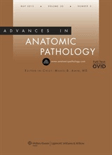
ADVANCES IN ANATOMIC PATHOLOGY
Transforming Clinical Practice through Innovative Research.ADVANCES IN ANATOMIC PATHOLOGY is a leading peer-reviewed journal dedicated to the field of anatomical pathology, published by LIPPINCOTT WILLIAMS & WILKINS. With an impressive impact factor and consistent ranking in the Q1 category for both Anatomy and Pathology and Forensic Medicine, it serves as an essential resource for researchers, clinicians, and students alike. The journal has been a critical platform for disseminating significant findings and advancements in the discipline since its inception in 1996, boasting Scopus rankings of #1 in Anatomy and #11 in Pathology. While it does not provide open access, it maintains rigorous standards in the selection of articles, ensuring that published research reflects the latest developments and techniques in the field. As we look toward 2024 and beyond, ADVANCES IN ANATOMIC PATHOLOGY remains committed to advancing the science of pathology, fostering innovation, and enhancing clinical practice through impactful research.
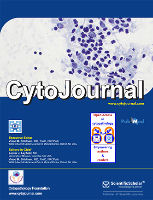
CytoJournal
Unlocking Insights in Pathology and Forensic Research.CytoJournal is a leading open-access journal focused on the fields of pathology and forensic medicine, published by SCIENTIFIC SCHOLAR LLC. With its esteemed reputation, the journal has achieved a Q2 ranking in the 2023 Category Quartiles in its field, indicating its significant contribution and impact among its peers. Over its convergence from 2004 to 2024, CytoJournal has established itself as a pivotal platform for researchers, professionals, and students to disseminate and exchange pioneering research findings related to cytopathology and diagnostic techniques. With an emerging Scopus rank of #115 out of 208 in the field, the journal maintains a solid percentile ranking of 44th, underlining its importance in the scientific community. CytoJournal's commitment to facilitating open access ensures that critical insights and advancements in pathology and forensic medicine are easily accessible to those at the forefront of this essential area of study.

Oral & Maxillofacial Pathology Journal
Empowering Professionals through Open Access InsightsOral & Maxillofacial Pathology Journal is a prominent peer-reviewed publication dedicated to advancing the field of oral and maxillofacial pathology. Published by the KAIRALI SOCIETY OF ORAL & MAXILLOFACIAL PATHOLOGISTS, this journal aims to provide a platform for sharing innovative research, clinical practices, and new techniques related to the diagnosis and management of oral diseases. With a commitment to open access, it ensures that valuable knowledge reaches a global audience of researchers, dental professionals, and students alike. Although specific impact metrics such as the HIndex and Scopus ranking are not listed, the journal is regarded as an essential resource for those involved in the oral health community. It plays a crucial role in fostering collaboration and disseminating cutting-edge advancements that can enhance patient care and clinical outcomes in oral pathology. For professionals looking to stay ahead in this dynamic field, Oral & Maxillofacial Pathology Journal serves as an indispensable tool for both foundational learning and advanced research.
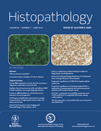
HISTOPATHOLOGY
Bridging Laboratory Insights with Clinical ExcellenceHISTOPATHOLOGY is a premier scholarly journal published by WILEY, targeting the fields of histology, pathology, and forensic medicine. With an ISSN of 0309-0167 and an E-ISSN of 1365-2559, this esteemed journal has maintained a strong academic presence since its inception in 1977. Boasting an impressive Q1 ranking in crucial categories such as Histology and Pathology, it ranks 13th out of 208 in Pathology and Forensic Medicine, and 5th out of 62 in Histology, reflecting its high impact and relevance within the scientific community. HISTOPATHOLOGY serves as a critical platform for disseminating significant research findings, reviews, and advancements in the diagnostic and therapeutic aspects of pathology. Although it does not operate under an open access model, its rigorous peer-review process ensures that published articles uphold the highest standards of scientific integrity. Scholars and practitioners alike benefit from the insights shared in this journal, as it aims to bridge the gap between laboratory science and clinical practice, fostering innovation and enhancing our understanding of disease mechanisms.